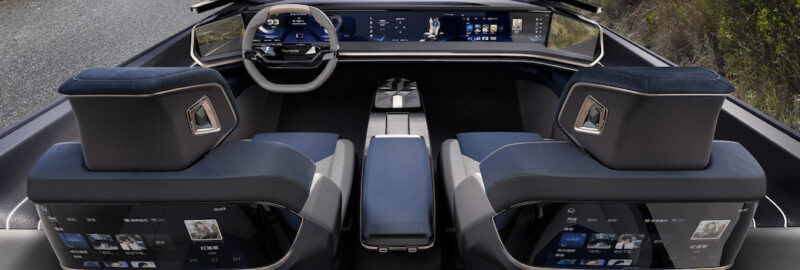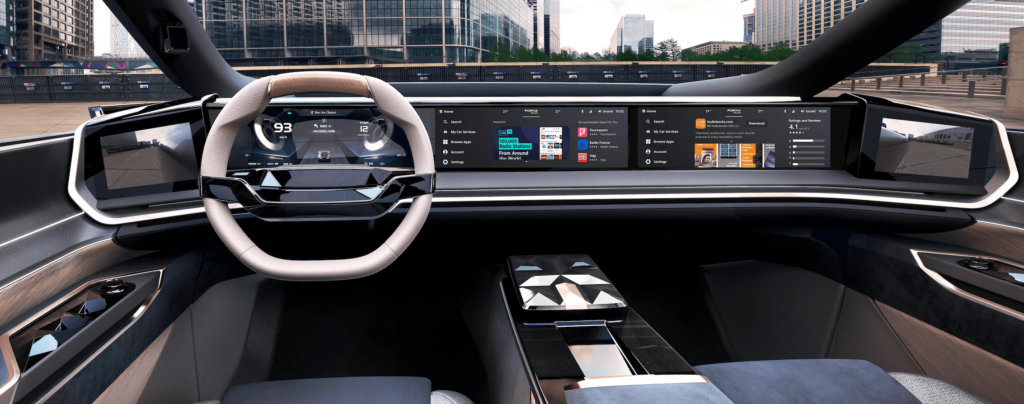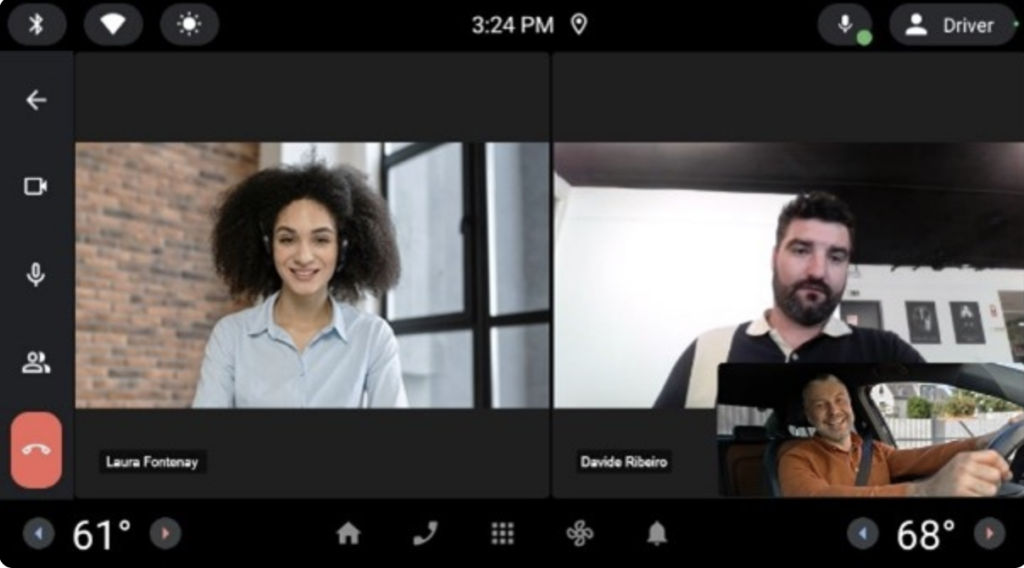In-car entertainment has come a long way since having a cassette deck was everything you could wish for on a road trip. In recent times, the development of in-car entertainment has kept pace with the advances in technology in the rest of the car and these days, an IVI (in-vehicle-infotainment system) is virtually standard on even the most basic models. Drivers are becoming ever-more reliant on a wide range of functionality to help with navigation, provide entertainment and increasingly, display and interpret complex information about the car itself.
Projected mode players
Until recently, the go-to way for drivers to get a wider range of functionality via their car’s IVI has been the use of projected mode systems (such as Google’s Android Auto or Apple’s CarPlay.) These systems allow apps and music to be shared between the driver’s smartphone and the car’s IVI system. Although this functionality has proved very popular and provides a way to share functionality between the user’s phone and the car’s IVI, it has one important limitation: Projected mode systems are not tailored to in-car functionality and rather are an extension of the users’ phone.
What makes Android Automotive OS different?
Recently a new OS has been making waves in the market which promises to change the dynamic and untether the car’s IVI from the user’s smartphone. It goes by the name of Android Automotive OS and it’s taking off so successfully that by 2025, research suggests that up to 50% of new vehicles will have it installed. There has been some understandable confusion since the name of this new OS is undeniably similar to one of the common ways to connect a user’s smartphone to the car but Android Automotive OS is a very different concept to projected mode solutions like Android Auto and Carplay. The fundamental difference (and what makes this such an interesting opportunity) is that Android Automotive OS is purpose-built to be integrated into the vehicle itself. It resides entirely within the car rather than being reliant on the user’s phone, with connectivity coming either from a SIM belonging to the car itself or through using another device as a hotspot. Essentially, it acts as a device in its own right and because of that, it is a much more versatile tool and can interact with the car’s internal systems to create some truly innovative features for the driver.
What’s so good about Android Automotive OS
Having established why Android Automotive OS is different to the more traditional projected mode functionality we’re familiar with, let’s explore why that’s such a good thing and the opportunities that it presents:
- It can interact with the car’s own systems to display relevant info about the vehicle’s performance and comfort and thus provides a great platform to introduce a car-centric portfolio of apps.
- It provides a great platform to offer the next level of apps around media, navigation, parking, charging and fuel consumption.
- Users can build their own library of apps from a dedicated store to suit their own driving needs.
- The interface can be optimized for in-car use and customized for the car itself rather than simply being an extension of the smartphone app.
- Android Automotive OS requires no storage on the user’s smartphone.
- The car is entirely agnostic to the user’s smartphone OS.
These attributes can be leveraged in a huge variety of exciting ways. For example, imagine being able to approach a petrol station (having already been alerted to the fact that you are low on fuel and being directed to the nearest refueling stop), pre-authorizing the pump you drive up to, fueling up and simply driving away having already paid through the IVI. Or how about an app that automatically starts and pays for a parking session for you when you drive into a parking space, and ends it as soon as you drive away? These are the kinds of real-world advantages that Android Automotive OS can provide.
What do developers like about Android Automotive OS?
We have explored what Android Automotive OS is (and what it isn’t) and what advantages it has over popular alternatives, so let’s now take a quick look at some of the reasons why developers might see it as an opportunity and why you might choose to work with it.
- Android Automotive OS is Android. Android Automotive is not a fork or parallel development of Android. It is the same codebase and lives in the same repository as the Android shipped on phones, tablets, etc.
- Android Automotive OS is a full-stack, open-source, highly customizable platform powering the in-vehicle infotainment experience. It’s a complete platform, ready to use, highly customizable and totally independent from any external device
- Developers can leverage their existing Android apps to provide a rich and fully integrated in-car experience.
- App publishers can access Vehicle Properties (through the Car API) to get access to vehicle specific information.
- All apps can be updated Over-the-Air.
- Android Automotive OS can control certain selected (and safe) car systems, such as A/C, and can access information about the vehicle’s status and key functions.
- Certain permissions and functionalities of the IVI can be adapted depending on the drive mode. For example, if the vehicle is in motion, access can be restricted or removed for certain actions that might not be safe (like watching a tv show)
- Android Automotive OS is becoming a standard across the automotive industry.
- Apps can be pre-embedded in the vehicle or pre-installed bringing marketing opportunities with the car OEMs.
The Wrap-up
As in-vehicle infotainment systems (IVIs) become ever-more sophisticated, the move away from relying on the users’ phone’s apps will become more and more common. Android Automotive OS allows the car to have its own sophisticated array of apps that are built entirely for that environment and interact seamlessly with the car’s own systems.
The result is a seamless overall experience for the driver and passengers, and the ability to have more useful interactions. It moves from being primarily a way to share music and apps from the user’s smartphone to a fully integrated navigation, entertainment, information, and vehicle optimization hub for your car.
If you’re a developer looking to distribute your app into this new platform, get in contact with us at Faurecia Aptoide to find out how we can support you in accessing the next generation of in-car entertainment.
Faurecia Aptoide is the leading automotive app store, powering the IVIs of millions of vehicles worldwide and we have a proven track record of supporting leading app developers in porting their application from mobile to automotive.
Android Auto™ is a registered trademark of Google Inc.
Apple CarPlay™ is a registered trademark of Apple Inc.




